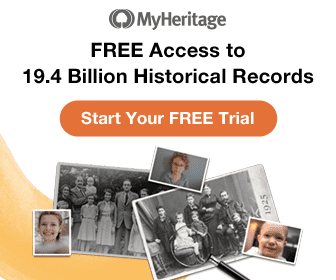In the last decade, as mail-order DNA kits have become accessible to many countries in the western world, excitable consumers have rushed to the forefront to swab their cheeks or spit in tubes in order to figure out the question that everyone is curious about:
“Where did I come from?”
As loaded as this question may seem, it is only human nature to be curious about our origins. This is the main reason why AncestryDNA, the largest database of consumers, has processed over 15 million consumer DNA kits since rolling out their product in 2012.
Understanding what companies like 23andMe, AncestryDNA, FtDNA, MyHeritage, and other have to offer is the best way that you, the consumer, get the biggest bang for your buck. Lets face it, DNA kits aren’t cheap! To fully understand what your results mean, approach the data with an open mind and do not let the lingo intimidate you. The more time you spend deciphering the data, the more the data will make sense and everything will naturally click.
So, what can you do with your DNA results? The main features of most DNA kit companies like AncestryDNA and 23andMe are their ethnic breakdowns or ethnicity statements alongside their large databases of DNA matches. So, let’s jump into these and discuss how to ensure you get the most out of your DNA results.
Ethnic Breakdown or Ethnicity Estimate
One of the main features of any consumer DNA kit is the ethnic breakdown that offers insight to the individuals ethnic make-up. Most companies offer this in the form of a pie chart and percentages. Many people are surprised at their results. Those with Native ancestry in their family lore often come up with nothing but a Western European ethnicity. These surprises are more common than people think. However, in order to understand where these numbers come from, we have to realize that the companies are constantly updating the accuracy of their base samples which they base their consumer’s breakdowns off of. These results are not fixed.
Many people only order these kits to see their ethnic breakdowns and they never log in again. This is a shame because they miss out on the updates which can drastically alter their data. Accuracy changes as science improves so, if you have not logged in to see your results in a few months, I definitely encourage doing so. Perhaps that bit of Native Ancestry or that huge amount of Irish DNA that your family always talked about has populated in recent updates. While doing so, keep in mind that these percentages are merely an estimate and take these results with a grain of salt.
DNA Matches
All of the companies that sell DNA kits offer insight that goes far beyond their major selling points. Health traits are a big advertising feature for the big major companies but the one thing they hardly advertise is the database of DNA matches that their consumers have access to. Whether you are an adoptee looking for your biological family or a genealogist looking to confirm your paper trail, the information provided by these DNA matches are more than enough to help solve these mysteries and confirm the generations of research. Just like the updates to the ethnic breakdowns, these matches are constantly populating. The holiday season is a big time for these databases to grow so always be mindful of the constant growth that these databases have.
Using genetic networks among your DNA matches can help to further your family research in situations where the papertrail fails. In the genealogy world, we call these brick walls. Many times, genetic genealogists are able to use DNA matches as a catapult to get us over the brick wall so we can work it back and offer insight to an individual’s mystery ancestor. Brick walls are most common in situations where there were few records or where records were destroyed. Nonetheless, whether there are floods, fires or wars, DNA prevails.
Most databases offer certain tools that allow the consumer to decipher these genetic networks. Grouping these DNA matches together allows you to recognize where specifically you and them share a common ancestor. It also helps keep results from being too overwhelming. Different DNA sites have different tools. FamilyTreeDNA offers a clustering tool that helps to automatically group your DNA matches together. 23andMe has a chromosome tool that allows you to pinpoint which segment on which chromosome you share with your matches. All of these tools, which are quite underutilized, are massive players in learning how your genetic family are connected.
Confirming the family tree using DNA matches can be done. If you are able to pinpoint common ancestors from these groupings then it goes to show that the information on your tree is likely correct.
Biologically proving your relationship to specific ancestors is the ultimate sourcing.
If you’re having a hard time linking a surname in your family tree to your DNA matches, it is important to locate the common ancestor from within the DNA clusters in order to help you locate where this skewed data may have come from. To cluster your matches manually, I recommend the Leeds Method.
We call these – NPE’s (Non-Paternal Events) and they are more common than most people are willing to admit. However, whether you have an NPE or not, utilizing your DNA matches will allow you to learn and build your true and biological family tree. Always be mindful that DNA does not lie. Open mindedness is highly encouraged.
The more you dive into your DNA results, the more you will learn and understand. Though it can seem daunting and very scientific, it is the best way to understand your history and the best way to make the most of your money.
Privacy
In order for consumers to get the most out of their product, the company is going to go above and beyond to protect their consumer’s data. With that said, it is important to note that DNA data can be made private, made public, it can be downloaded and, most importantly for consumer safety, you can delete it entirely if you choose to do so.
This is why another avenue of ensuring your effectiveness in the use of any company’s DNA results, save everything. Due to the fact that DNA matches can delete their data, by downloading and saving screenshots of your matches is oftentimes a good way to ensure that you get the most bang for your buck. This is especially important if you are an adoptee and actively reaching out to your DNA matches who, unfortunately, may not want to be located.
Rest assured, your data is safe and secure.
Understanding the constant updates to your ethnic breakdown or ethnicity statements and the fact that these results are not fixed should ensure you that the companies are working tremendously hard to provide you with the most accurate data. Since this data is incredibly personal, it is vital to the DNA companies that they maintain your trust.
Using your DNA matches to further your research, building them into your family tree, grouping them, and spending time with them will be pertinent to the outcomes you reach as a genealogist. Afterall, who doesn’t want their money to go further?


